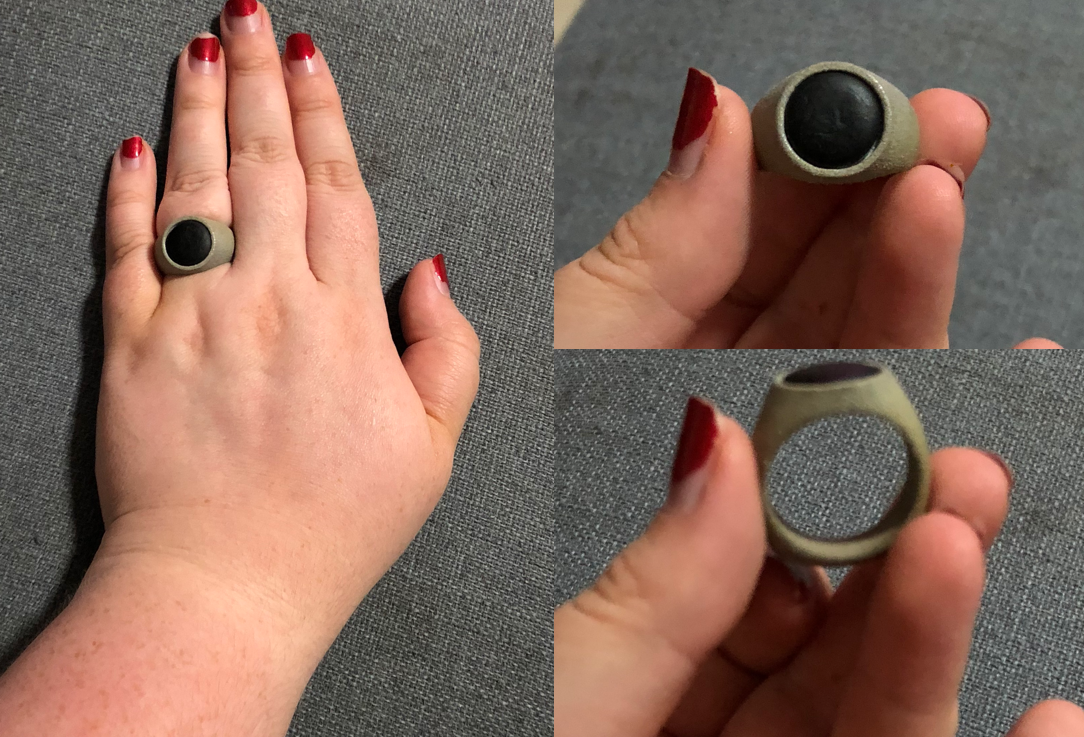I tried a little experiment using an NFC ring as a replacement for my business card at a conference. This post looks at my experiences with this, and the limitations.
Since I knew I’d be needing to share my contact details I decided to program them onto my NFC ring. My PhD research is on Insertables (devices that go in, through and underneath the skin) and the ring in a nice bridge to test the idea of implanted NFC microchips and bring up the discussion.
The NFC ring
I can use this ring to open my front door every night, which is pretty cool — fist bump for entry. However, since I don’t find the ring attractive, I don’t actually wear it very often. There are more attractive looking rings, such as the ones from chipmylife, but I also get ezecma so I don’t currently wear any of my rings.
The NFC Signet ring
Programming the ring
I used a free app called NFC Tools, where you select the Write mode, add a contact to be programmed and select Write. The contact is programmed to the next NFC device that is presented to the phone’s reader. Simples.
Using the ring — Happy path
The happy path, goes something like this:
“Do you have a business card?”
“Sure. Do you have a phone? Unlock it please”
I would then run my ring against the back of their phone and it would ask if you want to add the contact.
Save contact
MAGIC! BAM! I’m remembered as the unique person who had an NFC ring business card.
Using the ring — The reality
However, in reality this process isn’t so smooth.
Case 1: An incompatible phone
“Do you have a business card?”
“Sure! Do you have a phone? What kind of phone? Oh, it’s an older iPhone — OK this won’t work”
Case 2: Needing an app to use with an iPhone
“Do you have a business card?”
“Sure! Do you have an Android phone? Or an iPhone 7 or above?”
“Yes, I have an iPhone 7”
“Great, do you have an app that reads NFC?”
“No”
“OK — this won’t work”
Case 3: Difficulty Scanning
“Do you have a business card?”
“Sure! Do you have an Android phone? Or an iPhone 7 or above?”
“Yes, I have a Nexus”
“Is your NFC on?”
“Yes”
* Tries to scan chip. Can’t find exact spot where the reader is, so moves ring around trying to get it to scan*
“Do you know where the reader is on your phone?”
“No…”
* Gives up*
Case 4: Not having NFC on
“Do you have a business card?”
“Sure! Do you have an Android phone? Or an iPhone 7 or above?”
“Yes, I have a Nexus”
“Is your NFC on?”
“My what?” or “I don’t know” or “How do I do that?”
* talk them through how to turn on NFC, then scan the chip *
“Well, that wasn’t really easier than you typing my details now was is?”
The UX
With about 50% of Australian smartphone users having an iPhone, the need for these individuals to be using the latest models and to have an app, it’s unlikley you’re going to find someone who is ready to scan your ring.
The other 50 odd percent with Android phones, in my experience anyway, do not have the NFC on and may not be aware of this or how to turn it on. This is growing with the use of payments through Android Pay and Google Walet. However, given the limited numbers, it’s not more convenient to talk them through turning on NFC than just entering your details into their phone.
Given these limitations, the reality of using the NFC ring doesn’t match up to the expectations. It’s not as easy as it should be, nor really easy enough to be useful — especially when it requires wearing a ring I wouldn’t wear otherwise, that also causes pain!




